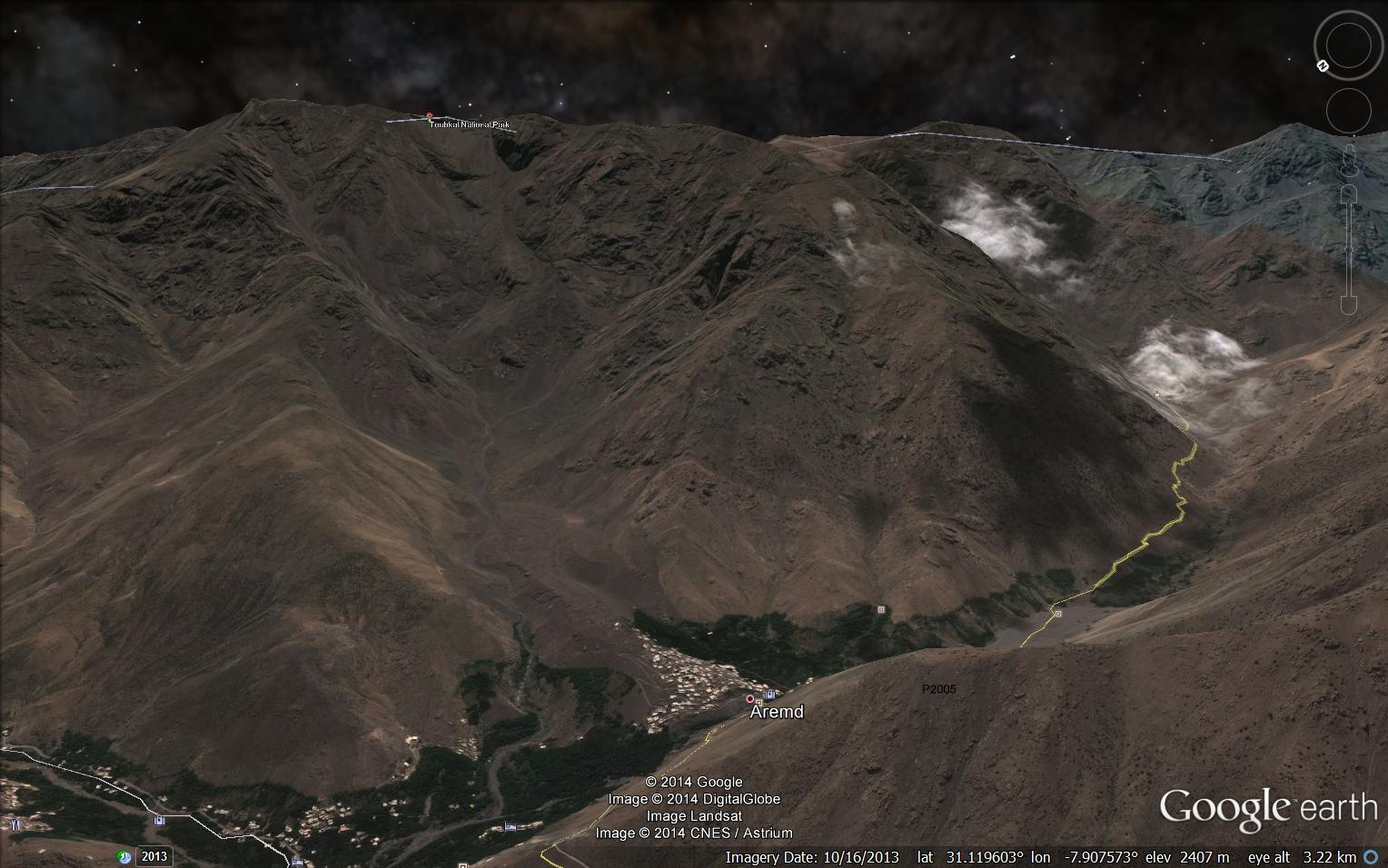16 April 2014
Arroumd – an interesting rock avalanche in Morocco
Posted by Dave Petley
The Arroumd Rock Avalanche
An interesting paper has just been published in the Bulletin of the GSA by Philip Hughes and colleagues (Hughes et al. 2014) on the Arroumd Rock Avalanche in the Atlas Mountains of Morocco. This is a very interesting feature, very clearly visible on Google Earth:
..
The village labelled Aremd, which seems to be more commonly known as Arroumd, is built on the toe of the landslide deposit. The landslide itself have originated from the steep slopes in the background, traveled down the side valley and been deposited in the valley floor and in part in the main valley. The resulting deposit has blocked the main valley to a degree. The image below (from here) shows the landslide deposit and the village from upstream – there appears to be the scar from a breach event on the left side; the boulders that form the avalanche are clearly visible to the right of the town:
..
This deposit has been discussed by geologists for over 130 years, with most interpretations indicating that this debris was the moraine from an ancient glacier (very often rock avalanche deposits have been interpreted as having a glacial origin). More recently, Hughes et al. (2011) first suggested that the deposit might have a landslide origin; this study involved detailed mapping to investigate whether that hypothesis might be correct.
A complex geomorphic history at Arroumd
The conclusion from the mapping and dating of the deposits is that this is an area with a very complex geomorphic history. Three moraines are present in the valley, but also present are two course, boulder-dominated deposits that are interpreted as having a rock avalanche origin. This suggests at least two major landslide events, which have in turn modified the older moraines. These two major rock avalanche deposits have both been dated to 4,500 years BP (+/-500 years), suggesting that they occurred quite close together in time (which is of course quite common for large rockslope failures).
Unfortunately, there is no simple geomorphic indicator of the likely trigger of rock avalanches, and many such failures occur without a trigger. Thus, any discussion of a likely trigger event for the Arroumd Rock Avalanche is speculative. In this case, Hughes et al. (2014) suggest that the proximity of the nearby, active Tizi n’Test fault may well be the culprit. I think that it would now be really interesting and worthwhile to trench the fault to see if there is a movement event with a similar date.
Finally, Hughes et al. (2014) point out that Arroumd is not the only valley-blocking rock avalanche in this part of the Atlas Mountains – indeed there is an even more spectacular example to the south at Lac d’Ifni, clearly evident on Google Earth:
..
In this case the landslide has blocked the valley and has not breached, allowing a lake to form. This lake is now mostly filled with sediments, leaving just the small remnant Lac d’Ifni behind.
References
Hughes, P.D., Fenton, C.R., and Gibbard, P.L., 2011, Quaternary glaciations of the Atlas Mountains, North Africa, in Ehlers, J., Gibbard, P.L., and Hughes, P.D., eds., Quaternary Glaciations—Extent and Chronology, Part IV: A Closer Look: Amsterdam, Elsevier, p. 1071–1080.
Hughes, P.D., Fink, D., Fletcher, W.J. and Hannah, G. 2014. Catastrophic rock avalanches in a glaciated valley of the High Atlas, Morocco: 10Be exposure ages reveal a 4.5 ka seismic event. Geological Society of America Bulletin, doi: 10.1130/B30894.1





 Dave Petley is the Vice-Chancellor of the University of Hull in the United Kingdom. His blog provides commentary and analysis of landslide events occurring worldwide, including the landslides themselves, latest research, and conferences and meetings.
Dave Petley is the Vice-Chancellor of the University of Hull in the United Kingdom. His blog provides commentary and analysis of landslide events occurring worldwide, including the landslides themselves, latest research, and conferences and meetings.